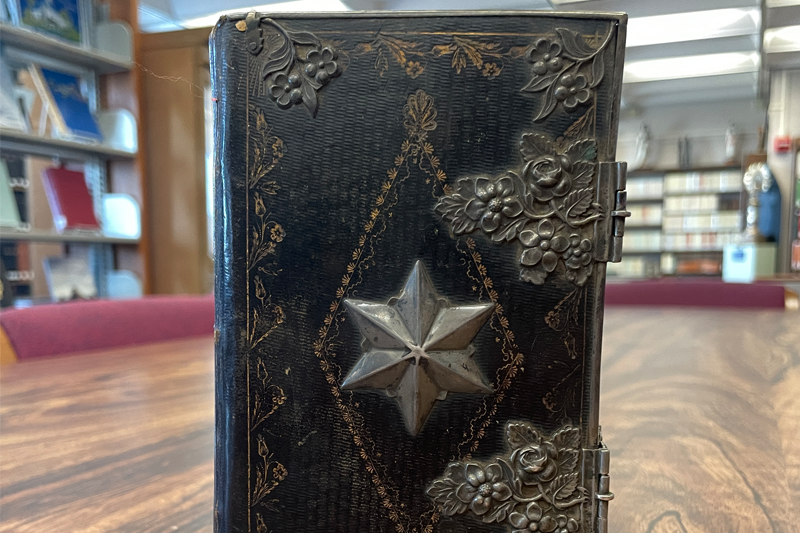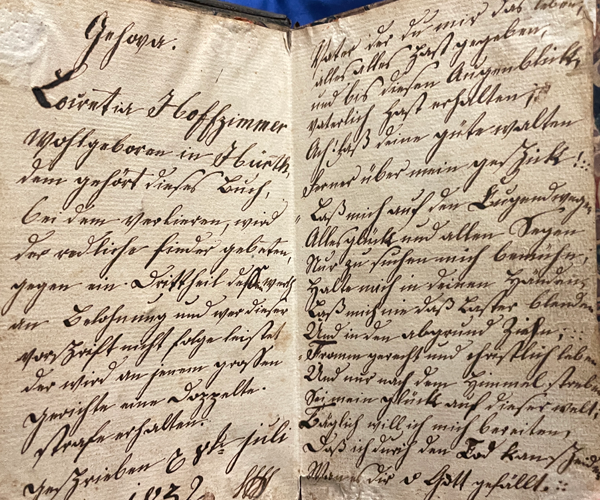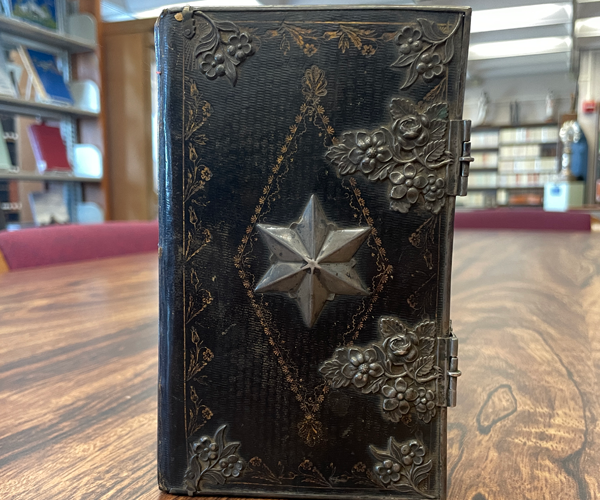Blogs

Double Trouble
By Henry Handley
In 1832, Lucretia Hoffzimmer of Hürth, Germany, continued a practice that predates Christianity when she wrote her name and a book curse against theft of her copy of Himmlischer Wegweiser, a Catholic devotional guidebook printed in nearby Cologne in 1826. According to the curse, an honest person who found the book would receive a reward worth one-third of the book’s value — but woe to the person who didn’t return it!
“If this admonition is not followed,” Hoffzimmer wrote, per a 1980 translation, the dishonest finder “will, at the last Judgment, receive a double punishment.” Facing the curse, she wrote a prayer to God asking that she always live piously, and “strive only for heaven.”
Book curses, inscriptions intended to ward off would-be book thieves, are favorite features in special collections social media and blogs; in fact, this one was mentioned in a previous University Libraries blog post about book ownership. Sensational as the curse may be, there’s more to learn about Lucretia Hoffzimmer and the book’s religious and material value tucked inside the front covers.
Beside the prayers that were part of the book, Hoffzimmer carried her enrollment form in the Bruderschaft, or confraternity of St. Matthias in Hürth, which she signed on April 6, 1828. A later owner added German holy cards reflecting a devotion to St. Joseph.
In the 20th century, the book became part of the collection of Father Jerome Mersberger, along with a sick call set for Mass. If it came to Mersberger with the set, presumably a priest carried it to the homes of people who weren’t able to participate in the sacrament in church. The German book probably wasn’t used by Father Mersberger, however, as he had to ask a Sister M. Clementa of the School Sisters of Notre Dame in Wisconsin for a translation of the inscriptions.
In a letter accompanying the translations, Sister Clementa wrote, “I do not see it [the ‘curse’] as such, only a just punishment for stealing.” She also noted several missing sections of the book, “taken out very neatly, and perhaps by the lady herself for daily use.”
Even if it lacked the evident religious use of its former owners, the book would be notable for its binding, which has raised metal stars that serve as decoration and protection for the covers’ surface, attached to the pasteboard covers; floral metal edges; and filigreed clasps. “It is a precious book,” Sister Clementa wrote, “and worth its reward for the finder.”
— Henry Handley is an assistant professor and collections librarian in the Marian Library at the University of Dayton.



